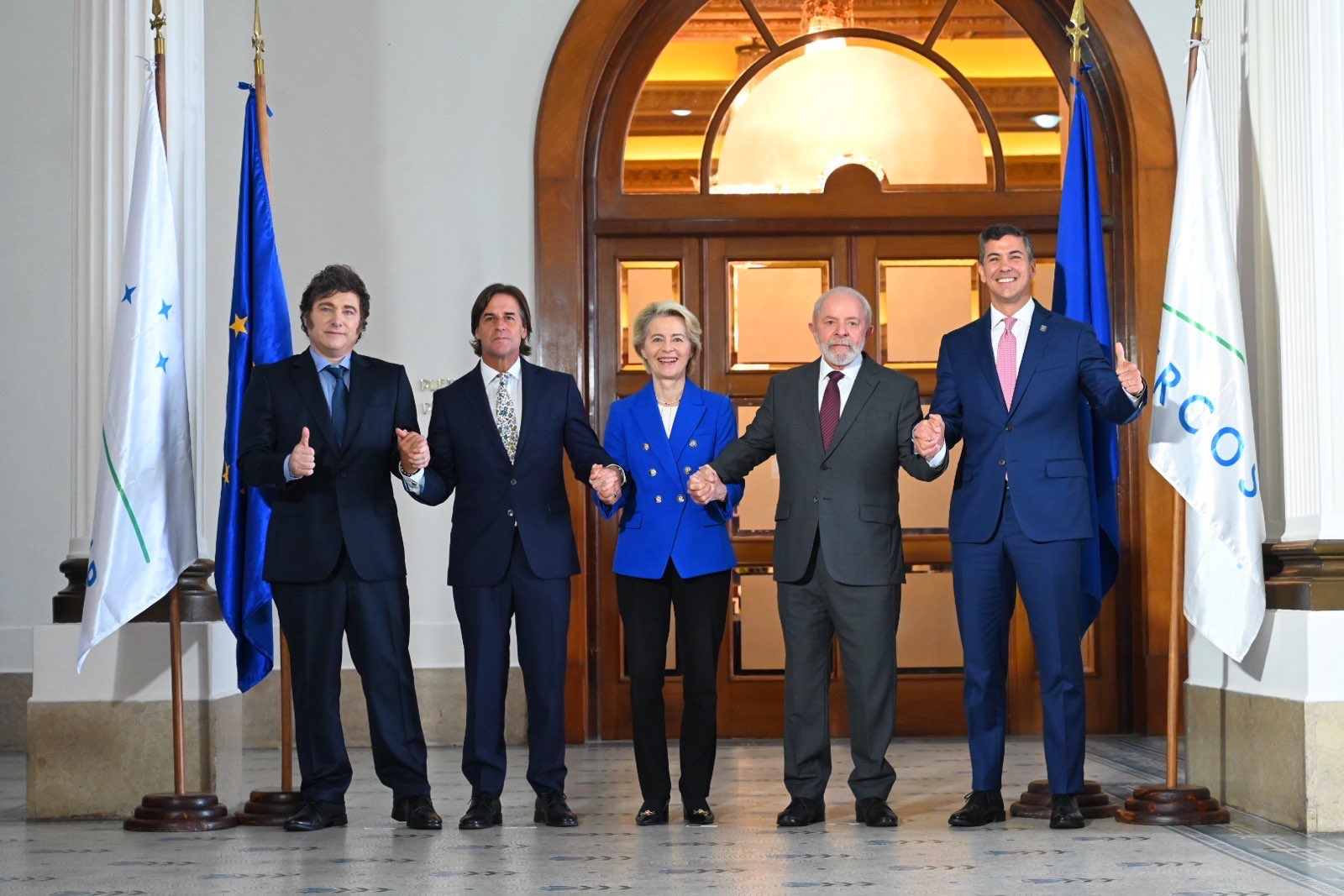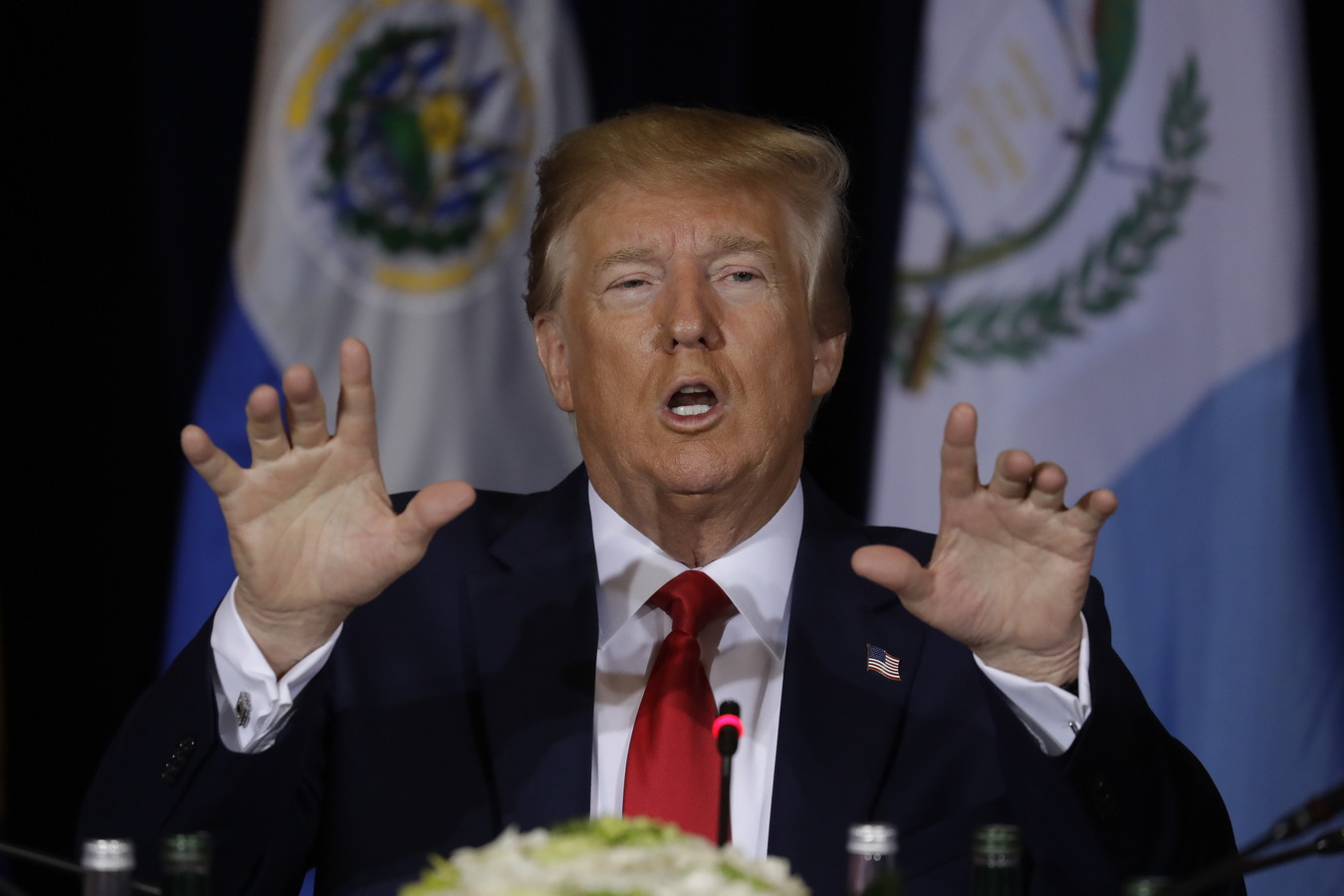Viewpoints: What Should the Top Priority Be for U.S.-Mexican Relations?
Viewpoints: What Should the Top Priority Be for U.S.-Mexican Relations?
With Enrique Peña Nieto taking the reins in Mexico and Barack Obama’s reelection, prominent Mexican and U.S. experts weigh in on what they believe the top goals should be for the two incoming administrations.
With Enrique Peña Nieto taking the reins in Mexico and Barack Obama’s reelection the United States, what should the two leaders focus on in terms of bilateral ties? Many observers say the time is ripe to strengthen relations: Last year, U.S.-Mexican trade ties broke new records, hitting $500 billion in bilateral trade in goods and services; news outlets offer glowing praise for Mexico's economic outlook; and strong support from the Latino electorate for Obama's candidacy could help boost prospects for U.S. immigration reform early in his second term.
As new administrations take shape in both countries, 9 prominent Mexican and U.S. experts share what they believe the top goals should be for U.S.-Mexican relations. From opportunities presented by the Trans-Pacific Partnership to a reconsideration of outdated perceptions on both sides of the border, from infrastructure projects that could boost cross-border trade to a renewed focus on North American integration, these high-level officials and analysts provide their perpectives on how the two governments can deepen ties.
View expert contributions:
- Rafael Fernández de Castro, Chair, Department of International Studies, Instituto Tecnológico Autónomo de México (ITAM)
- Antonio Garza, Former U.S. Ambassador to Mexico (2002-2009)
- James Jones, Former U.S. Ambassador to Mexico (1993-1997)
- Beatriz Leycegui, Senior Fellow, International Centre for Trade and Sustainable Development
- Diana Negroponte, Nonresident Senior Fellow, Brookings Institution
- Shannon O’Neil, Douglas Dillon Fellow for Latin American Studies, Council on Foreign Relations
- Arturo Sarukhan, Mexican Ambassador to the U.S.
- Charles Shapiro, President, Institute of the Americas
- Eric Farnsworth, Vice President, AS/COA
Rafael Fernández de Castro, Chair, Department of International Studies, ITAM
"It is Peña Nieto’s task to help Obama create the foundation for immigration reform, not with demands but through actions."
 Brand new President Enrique Peña Nieto has three priorities in Mexico’s bilateral relations with the United States.
Brand new President Enrique Peña Nieto has three priorities in Mexico’s bilateral relations with the United States.
The first priority is to take advantage of the opportunity that was created by the weight of the Hispanic vote in favor of Barack Obama’s reelection to achieve immigration reform. It is Peña Nieto’s task to help Obama create the foundation for immigration reform, not with demands but through actions. He must therefore align Mexico’s objectives with those of the United States: they must consistently seek legal, safe and orderly migration. Furthermore, he must do some serious housekeeping, preventing abuses against Central American migrants from Guatemala, Honduras and El Salvador. And, he must develop a stable southern border, one that counts with a state presence and adequate infrastructure. The spirit of the transformation of the southern border must preserve the positive aspects of border integration processes while achieving efficiency in formal operations that will allow it to triumph over illegality.
The second priority is to take advantage of more favorable economic winds in both Mexico and the United States. Peña Nieto must prioritize an agenda of economic integration and greater regional competitiveness. The Mexican and Canadian entry into the Trans Pacific Partnership negotiations signify an opportunity to harmonize stances between the three members of NAFTA to amplify markets in Asia. Mexico will be hosting the 2013 North American Leaders Summit, and Peña Nieto should thus be able to push a new regional strategic agenda that includes safer and efficient borders and the standardization of production.
The third priority is to maintain the aid flows that help combat organized crime and drug trafficking in the face of a U.S. fiscal crisis that can threaten these resources. Here Peña Nieto must emphasize three elements: agree with Washington’s priority that it help strengthen Mexico’s law enforcement institutions (police, judges, and prisons); develop a regional vision that includes Central America; and insist on an open debate that finally puts the decriminalization of drugs on the table.
Rafael Fernández de Castro is chair of the international studies department at the Instituto Tecnológico Autónomo de México (Autonomous Technological University of Mexico—ITAM).
Antonio Garza, Former U.S. Ambassador to Mexico
“A first step is to get rid of outdated perceptions—on both sides.”
 The United States and Mexico have enjoyed a very healthy and respectful relationship. On issues of shared interest—primarily trade and security—we’ve cooperated, though mostly out of necessity. Yet neither country has ever truly leveraged the bilateral relationship strategically.
The United States and Mexico have enjoyed a very healthy and respectful relationship. On issues of shared interest—primarily trade and security—we’ve cooperated, though mostly out of necessity. Yet neither country has ever truly leveraged the bilateral relationship strategically.
What will it take to bring about this kind of fundamental shift? A first step is to get rid of outdated perceptions—on both sides. You simply can’t expect to have a strategic relationship that functions in real time if perceptions lag present realities. There’s been new research and insightful commentary recently highlighting the gap between Americans’ perceptions of Mexico and the country’s current reality.
President Enrique Peña Nieto faces the daunting task of moving Main Street U.S. perceptions of Mexico closer to where the views of economists, investors, and discerning travelers are on the country. He will help this along by conveying his administration’s absolute commitment to carrying through promised economic reforms, implementing anti-corruption and transparency initiatives, and reinforcing cooperation on security.
For President Obama, it’s important to signal that his new team is completely schooled in the reality of today’s Mexico and that they are prepared to take advantage of the moment to recast the relationship to the benefit of both countries. Delivering on immigration reform and the Trans-Pacific Partnership trade agreement are rare opportunities for a U.S. administration to fundamentally alter Mexicans’ perceptions of their northern partner.
As Mexico’s place in the world rises and the U.S. continues to recalibrate its foreign alliances, there’s a unique opportunity to move the bilateral relationship to a more strategic level—but it will take some work.
Antonio Garza is former U.S. ambassador to Mexico (2002-2009). He is counsel in the Mexico City Office of White & Case and is chairman of Vianovo Ventures, a cross-border consultancy. Ambassador Garza is online at www.tonygarza.com.
James Jones, Former U.S. Ambassador to Mexico
“North America sits near the pinnacle of its greatest economic strength in history.”
 The overarching goal of our bilateral relationship should be to thoroughly integrate the economies of North America. Democracy and security are strengthened when commerce flows and grows. This creates wealth, opens new jobs, and establishes better personal relationships in both countries. To achieve this, we can work together to reduce the regulatory barriers to efficient trade by harmonizing cross-border regulations and modernizing border infrastructure.
The overarching goal of our bilateral relationship should be to thoroughly integrate the economies of North America. Democracy and security are strengthened when commerce flows and grows. This creates wealth, opens new jobs, and establishes better personal relationships in both countries. To achieve this, we can work together to reduce the regulatory barriers to efficient trade by harmonizing cross-border regulations and modernizing border infrastructure.
The U.S. must pass comprehensive immigration reform that recognizes reality in our labor needs and legal protections for immigrants who are here helping build our economy. The U. S. must implement a debt reduction program combining serious spending cuts and revenue increases to give certainty and new impetus to growing our economy. Mexico must implement judicial and law enforcement reforms that will give confidence to businesses and citizens that a rule of law prevails there. Energy reforms are needed to attract private capital to fully realize Mexico's abundant opportunities. Mexico needs tax reform that increases revenue, reduces the informal economy, and provides the framework to close the deep wealth divide among its citizens. To accomplish this and to further reduce the 40 million living in poverty, Mexico needs to make massive investments in infrastructure and quality education. Mexico's growing middle class is impressive but to expand that even more will create market and economic power that will be the envy of the hemisphere.
North America sits near the pinnacle of its greatest economic strength in history. Together we can take it to the top.
James R. Jones is the chairman and CEO of ManattJones Global Strategies and the former U.S. ambassador to Mexico (1993-1997).
Beatriz Leycegui, Senior Fellow, International Centre for Trade and Sustainable Development:
“Mexico and the United States cannot fight geography.”
 One of their top priorities should be to address with a greater sense of urgency the bilateral and North American competitiveness agenda. The Mexican and U.S. economies are highly integrated and interdependent. If their economies do well, the impact on job creation is immediate. The U.S. is Mexico’s most important export market; Mexico is the U.S.’s second most important export market. Of every dollar the U.S. imports of Mexican goods, 40 percent have American content, in comparison to China’s (4 percent), Brazil’s (3 percent), or India’s (2 percent).
One of their top priorities should be to address with a greater sense of urgency the bilateral and North American competitiveness agenda. The Mexican and U.S. economies are highly integrated and interdependent. If their economies do well, the impact on job creation is immediate. The U.S. is Mexico’s most important export market; Mexico is the U.S.’s second most important export market. Of every dollar the U.S. imports of Mexican goods, 40 percent have American content, in comparison to China’s (4 percent), Brazil’s (3 percent), or India’s (2 percent).
Due to the reduction in the differential in labor costs between Mexico and China (in 2003, it stood at 237 percent; in 2010, at 13.8 percent) and increases in energy and transport costs, investment and production are returning to North America.
The most important elements of the North American competitiveness agenda should include: expediting the work to create a twenty-first-century border (infrastructure, risk management, pre-clearance, customs cooperation); strengthen regulatory cooperation (mutual recognition of regulations); liberalization of strategic services (e.g. telecommunications, air, land and sea transportation), and the improvement in the enforcement of intellectual property laws. The Trans-Pacific Partnership negotiations can be an opportunity to advance some of these issues.
Mexico and the United States cannot fight geography. Why would Mexico forego the benefit of being next to the most important economy of the world? Why would the United States ignore the possibility of further integrating with a country that has proven to be a partner in production more than a competitor?
Beatriz Leycegui is a Senior Fellow at the International Centre for Trade and Sustainable Development in Geneva. She served as Mexico’s undersecretary for foreign trade at Mexico’s Ministry of Economy for five years (2006-2011).
Diana Negroponte, Senior Fellow, Brookings Institution:
“[F]acilitate the anticipated tripling of cross-border trade.”
 Deepening the trade relationship and facilitating the shipment of component parts between Mexico and the United States requires the creation of access roads some eight miles ahead of the principal border crossings. With electronic submission of customs/immigration documentation and with electronic seals on transnational containers, trucks filled with bilaterally manufactured products can more rapidly pass across the border. Currently, the trucks are delayed principally for lack of access roads leading up to the border, especially on the Mexican side.
Deepening the trade relationship and facilitating the shipment of component parts between Mexico and the United States requires the creation of access roads some eight miles ahead of the principal border crossings. With electronic submission of customs/immigration documentation and with electronic seals on transnational containers, trucks filled with bilaterally manufactured products can more rapidly pass across the border. Currently, the trucks are delayed principally for lack of access roads leading up to the border, especially on the Mexican side.
In order to construct these roads, private-public partnerships are needed. The NADBANK, established 20 years ago to support environmental projects, is the best placed to mobilize these partnerships. The bank's bylaws permit this. However, the environmental impact needs to be interpreted broadly. The Environmental Protection Agency (EPA) could recognize that new roads relieve the congestion and high levels of air pollutants at the border crossing itself. Use of access roads may spread pollution further inland, but the levels of pollutants will be significantly lower than those currently suffered each side of the Rio Grande.
NADBANK’s initiative and the White House leadership to facilitate EPA approval could lead to the development of access roads and decongestion at the actual border. Mexican presidential encouragement to NADBANK's directors to seek PPPs and U.S. presidential urging to the EPA for a broad interpretation of its mandate could result in a decade's work of new infrastructure projects. This will facilitate the anticipated tripling of cross-border trade as both countries negotiate a Trans-Pacific Partnership and Mexico negotiates a Pacific Trade Alliance with its South American partners.
Presidential decisions to advance on instructing NADBANK to move forward with PPPs for these infrastructure projects are relatively easy. Their consequences will enhance the trade and prosperity of both nations.
Formerly a trade lawyer and professor of history, Diana Negroponte is a nonresident senior fellow with the Latin America Initiative under Foreign Policy at the Brookings Institution.
Shannon O’Neil, Senior Fellow, Council on Foreign Relations
“[Expanding production links will] enable companies to become more globally competitive, benefiting businesses, workers, and ultimately the economies of both nations.”
 Mexico and the United States should focus on deepening economic ties. Commercial interdependence is already substantial, with nearly a half trillion dollars’ worth of goods crossing the border each year. Some 80 percent of Mexico’s exports go north, and for nearly half of U.S. states, Mexico is the number one or two destination for exports— supporting an estimated 6 million American jobs today.
Mexico and the United States should focus on deepening economic ties. Commercial interdependence is already substantial, with nearly a half trillion dollars’ worth of goods crossing the border each year. Some 80 percent of Mexico’s exports go north, and for nearly half of U.S. states, Mexico is the number one or two destination for exports— supporting an estimated 6 million American jobs today.
These exports are more often than not pieces and parts—not finished goods—evidence of the regional supply chains developing in North America. In fact, 40 percent (on average) of every product imported from Mexico is really “made in America.” This compares to just 4 percent in goods from China.
Facilitating and expanding these production links will require making cross-border trade more efficient through investments in border infrastructure, standardized regulations (so that countries do not need fulfill similar requirements in both countries), and common customs forms, among other efforts. But they will also enable companies to become more globally competitive, benefiting businesses, workers, and ultimately the economies of both nations.
Shannon O'Neil is the Douglas Dillon Fellow for Latin American Studies at the Council on Foreign Relations and publishes the blog www.latintelligence.com.
Ambassador Arturo Sarukhan, Mexican Ambassador to the U.S.
“[W]e need to continue strengthening the participation and commitment of civil society and the private sector across our common border, as they are true co-stakeholders in our bilateral efforts toward economic progress.”
 Over the past two decades, NAFTA has dramatically altered the way Mexico and the United States engage with one another. However, much more can and should be done to bring North American competitiveness back to a starring role on the global stage. This is why the participation of all three North American countries in the Trans-Pacific Partnership (TPP) will be so important. The TPP will enable us to discuss measures that meet the needs and challenges of twenty-first-century free and fair trade, such as compatibility of regulatory systems, new environmental provisions, strong protection for intellectual property rights, and emerging areas such as digital technologies and e-commerce. The TPP will further deepen and strengthen the integrated supply and production chains between our two countries. And as a true coalition of the free-trade willing in the Americas and across the Pacific Rim, the TPP therefore represents the next step in a North American Grand Strategy. In addition to the TPP, we need to continue strengthening the participation and commitment of civil society and the private sector across our common border, as they are true co-stakeholders in our bilateral efforts toward economic progress.
Over the past two decades, NAFTA has dramatically altered the way Mexico and the United States engage with one another. However, much more can and should be done to bring North American competitiveness back to a starring role on the global stage. This is why the participation of all three North American countries in the Trans-Pacific Partnership (TPP) will be so important. The TPP will enable us to discuss measures that meet the needs and challenges of twenty-first-century free and fair trade, such as compatibility of regulatory systems, new environmental provisions, strong protection for intellectual property rights, and emerging areas such as digital technologies and e-commerce. The TPP will further deepen and strengthen the integrated supply and production chains between our two countries. And as a true coalition of the free-trade willing in the Americas and across the Pacific Rim, the TPP therefore represents the next step in a North American Grand Strategy. In addition to the TPP, we need to continue strengthening the participation and commitment of civil society and the private sector across our common border, as they are true co-stakeholders in our bilateral efforts toward economic progress.
I am convinced that Mexico and the United States are very well-positioned to make progress on the economic agenda. During the past six years, we have developed a solid bilateral relationship, based on the principle of shared responsibility, and with unprecedented levels of cooperation. This spirit of collaboration, together with NAFTA and soon TPP, leave Mexico and the United States on a strong footing to profit from the economic opportunities before us, and to and tackle our common challenges together.
Arturo Sarukhan has served as Mexico's ambassador to the United States since February 2007. He previously served as chief of policy planning at the Foreign Ministry and as Mexican consul general to New York.
Charles Shapiro, President, Institute of the Americas
“It is time for [President Barack] Obama and President Enrique Peña Nieto to transform U.S.-Mexican bilateral relations into a true partnership.”
 At the 2009 Summit of the Americas, President Barack Obama stressed that he wanted a relationship of equals. It is time for Obama and President Enrique Peña Nieto to transform U.S.-Mexican bilateral relations into a true partnership.
At the 2009 Summit of the Americas, President Barack Obama stressed that he wanted a relationship of equals. It is time for Obama and President Enrique Peña Nieto to transform U.S.-Mexican bilateral relations into a true partnership.
The headlines always go to energy, drugs, and immigration. And yes, Mexican leaders must figure out how to produce more oil and natural gas. Yes, the United States must reduce our appetite for drugs and control the illicit export of weapons and drug money. U.S. politicians will reform our immigration policy when they understand that we need Mexican workers and that anti-Latino sentiments will cost them elections.
What is vital, if less sexy, is to realize that Canada, Mexico, and the United States are one economic entity. The focus must be on North American competitiveness. While respecting national sovereignty, we need to recognize that supply chains straddle borders. The manufactured exports of each contain components from all three. NAFTA was the cutting edge laptop of 1992. It’s time for the North American equivalent of the iPhone 5. We must accelerate the movement of sub-components and finished products (and tourists) across our borders. We need to make it easier for technicians to work temporarily in each other’s countries. We need to harmonize our regulations and standards. Together the three nations need to develop markets with the Trans-Pacific Partnership, the European Union, APEC, and the Pacific Alliance. That’s how to generate growth in all three North American nations.
Charles Shapiro is president of the Institute of the Americas, a public policy think tank at the University of California San Diego. He is a retired U.S. diplomat and served as U.S. ambassador to Venezuela (2002-2004).
Eric Farnsworth, Vice President, AS/COA
“A joint economic agenda is now more achievable than before.”
 “Should be” and “will be” have frequently been two very different things in the U.S.-Mexico bilateral relationship. The coming year offers the opportunity for a new approach.
“Should be” and “will be” have frequently been two very different things in the U.S.-Mexico bilateral relationship. The coming year offers the opportunity for a new approach.
For their own domestic purposes and in the wake of their respective elections, the United States should quickly tackle immigration reform while Mexico should liberalize its energy sector.
In terms of the bilateral relationship, however, both governments (including their legislatures) should recognize the nature of economic integration that has occurred since NAFTA, making our two economies virtually inseparable, along with Canada, as a joint production platform. This new reality should both be celebrated and also enhanced. Joint approaches within the Trans-Pacific Partnership negotiations can be a means to achieve NAFTA 2.0. If coupled with a North American approach to potential trade negotiations with the EU, North American economic integration can advance to a point unthinkable even a few short years ago. With continued economic and commercial pressure from China, India, and elsewhere, this approach will support the long-term economic well-being of the United States and North America more broadly.
A joint economic agenda is now more achievable than before. The Hispanic community in the United States has found its voice politically, manufacturing is returning to the United States due to lower prices for natural gas, and, despite ongoing concerns about violence and the drugs trade, Mexico is doing well enough economically to entice investors back from China. Now is perhaps the best opportunity in recent memory to intensify economic collaboration. It should be the top bilateral priority.
Eric Farnsworth is vice president of Americas Society/Council of the Americas in Washington DC. From 1995 to 1998, he was senior adviser to the White House special envoy for the Americas.








